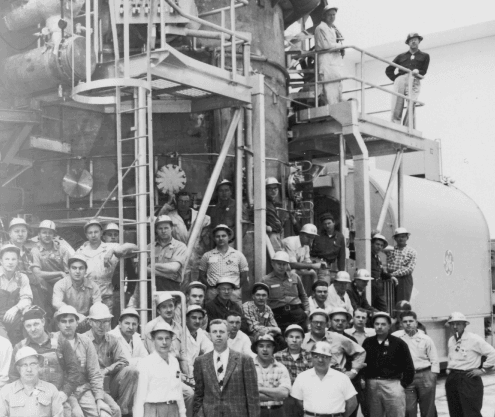History

The Atomic Energy Commission (AEC), a predecessor to DOE, was responsible for the early development of nuclear power in the U.S. and was successful in both shepherding the commercialization of the nuclear power plants now operating and demonstrating a handful of other designs. Several are being revisited by the companies pursuing nuclear energy innovation today.
An in-depth analysis by researchers at the Electric Power Research Institute (EPRI) and Vanderbilt University provides some important insights. This EPRI report provides an in-depth review of the history of technology-specific programs in reactor commercialization in the U.S. (developing pressurized-water and boiling-water reactors), United Kingdom (developing the gas-cooled reactor), and Canada (developing the pressurized heavy-water reactor). The findings provide encouraging signs that nuclear power commercialization could proceed rapidly given a clear government mandate and consistent support.
Through 1962 in the U.S., approximately $11 billion (in 2017 USD) was invested in civilian nuclear power research, development, and demonstration, with 58% provided by the AEC and 42% provided by industry. The signature demonstration program of the AEC was the Cooperative Power Reactor Demonstration Program (CPRDP), which used a variety of support mechanisms and cost-sharing arrangements for 11 demonstration projects and two commercial-scale reactors covering eight technologies. The AEC provided support for construction costs, fuel leasing, fuel fabrication, R&D costs, decommissioning, and various other items.
The CPRDP was successful in demonstrating a wide variety of designs in a rapid manner with government-industry cost sharing. The CPRDP was pursued in an era of Cold War competition and urgency, with a clear and bold government mandate. A pronounced urgency is emerging again. The U.S. has near-peer competitors working to establish global energy market and nuclear dominance, something that U.S. foreign policy and security policy developers are mindful of. However, layered on top of that is the threat of global climate change which some studies suggest is already damaging vulnerable populations and ecosystems, and will bring further impacts to society and the environment across the globe in the years to come.
The U.S. Nuclear Fuel Working Group (NFWG) was established by Presidential Memorandum on July 12, 2019, to undertake a complete analysis of national security considerations with respect to the entire nuclear fuel supply chain, and report back to the President. That report, titled “Restoring America’s Competitive Nuclear Energy Advantage,” illustrates that nuclear power is intrinsically tied to national security. One recommendation included in the report is that the U.S. government should leverage American technological innovation and advanced nuclear R&D investments to accelerate technical advances and regain American nuclear energy leadership. To meet these challenges, public and private sectors in the U.S. are redoubling efforts to commercialize scalable, affordable, and exceptional nuclear power technology. The U.S. has done this before with the CPRDP during an era of big ideas and bold action. Today, private-sector companies and entrepreneurs are pursuing bold ideas, and DOE has established NRIC to join and support them with the same spirit of the Atoms for Peace era, but with the benefit of decades of advancement and experience both in partnerships and in technology.
Nuclear Energy Innovation Capabilities Act of 2017
On September 28, 2018, S. 97, the “Nuclear Energy Innovation Capabilities Act of 2017,” (NEICA) was signed into law. NEICA amends the Energy Policy Act of 2005 to update the mission and objectives of DOE’s civilian nuclear energy R&D, and commercial application programs to speed up development of advanced reactors in the U.S. The bill was approved with strong bipartisan support.
NEICA addresses some of the financial and technological barriers to nuclear innovation by reducing regulatory costs, authorizing development of a new fast-neutron facility for advanced fuels and materials research, directing DOE to establish NRIC, and expanding high-performance computing capabilities in support of new nuclear technologies.